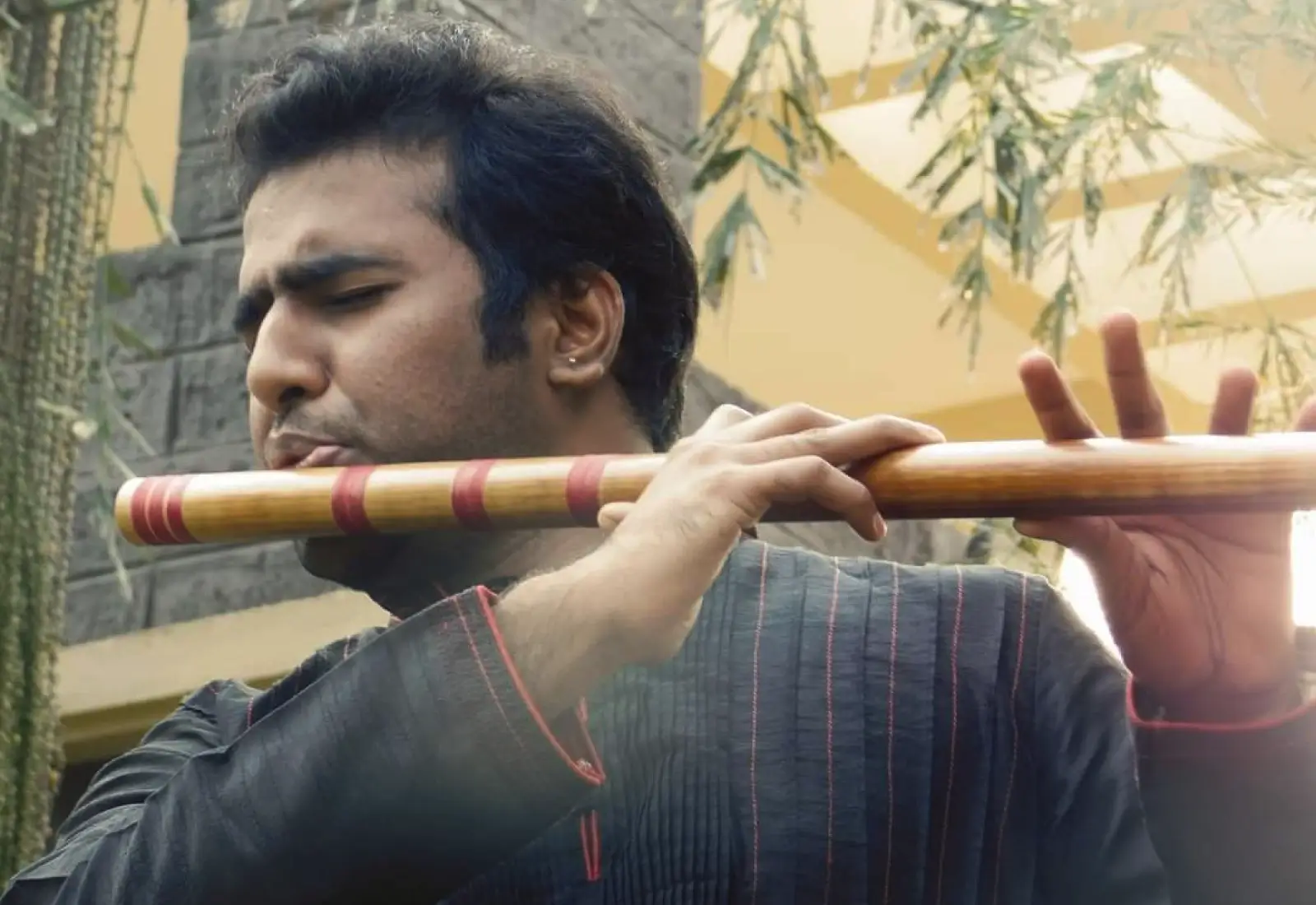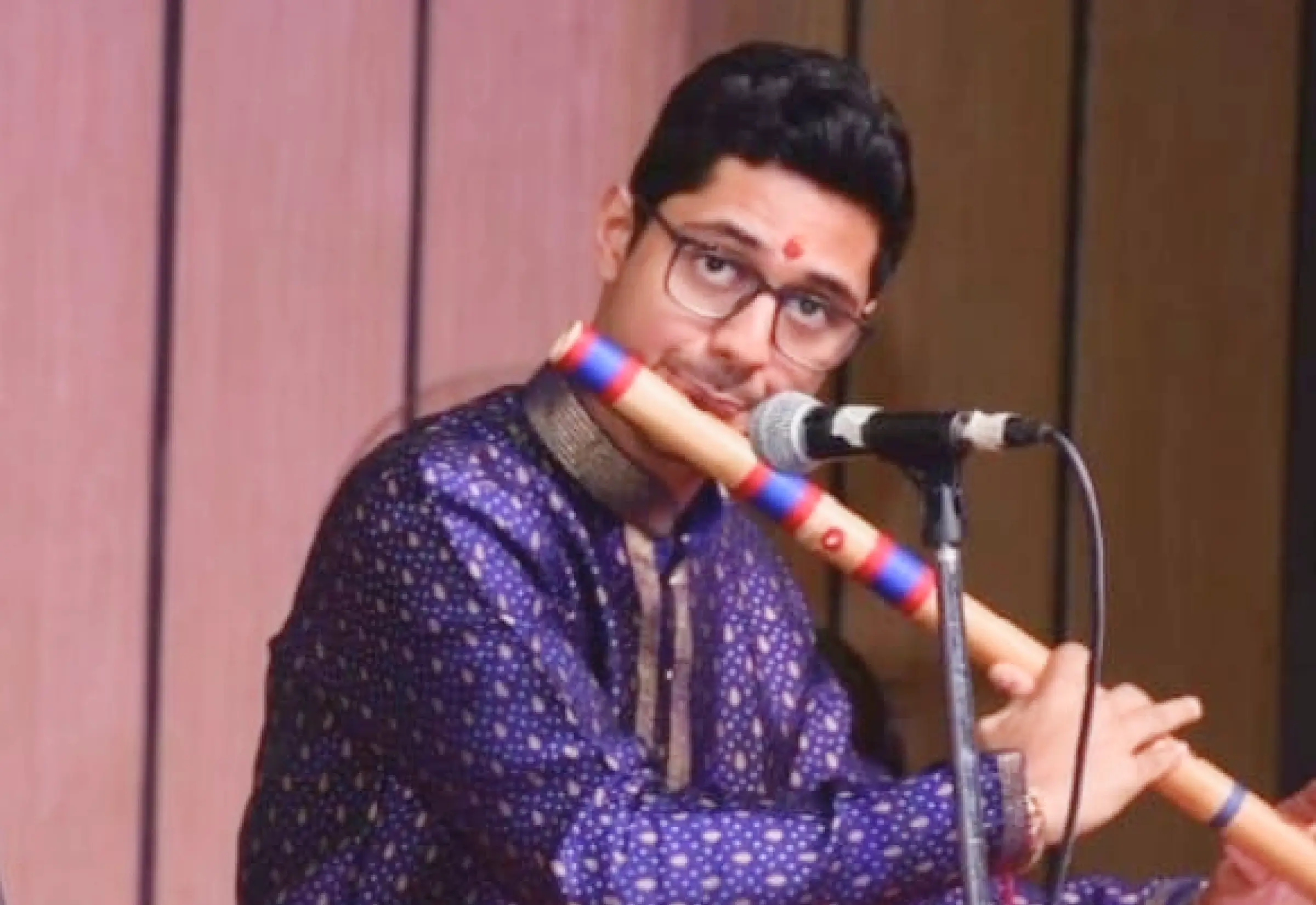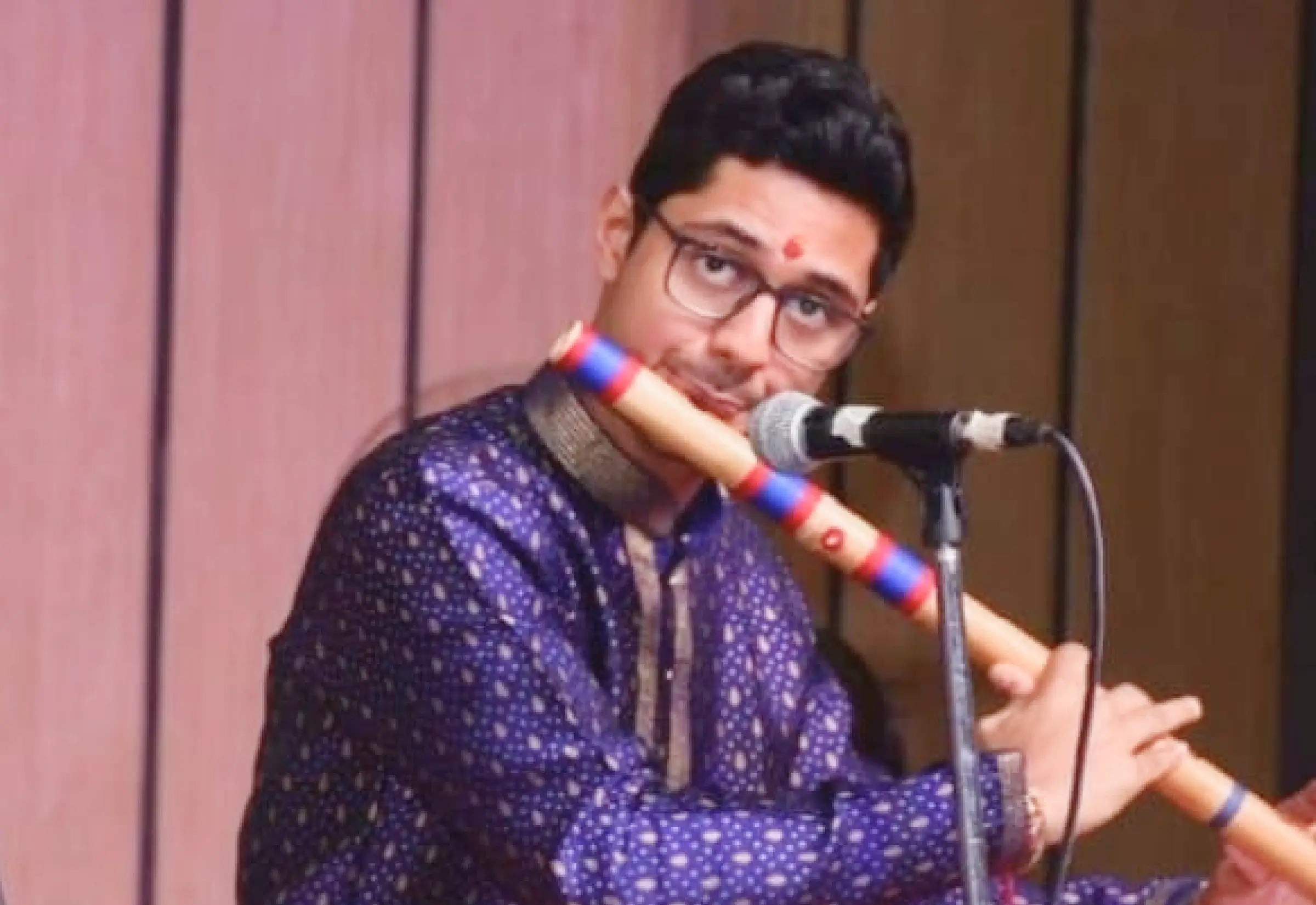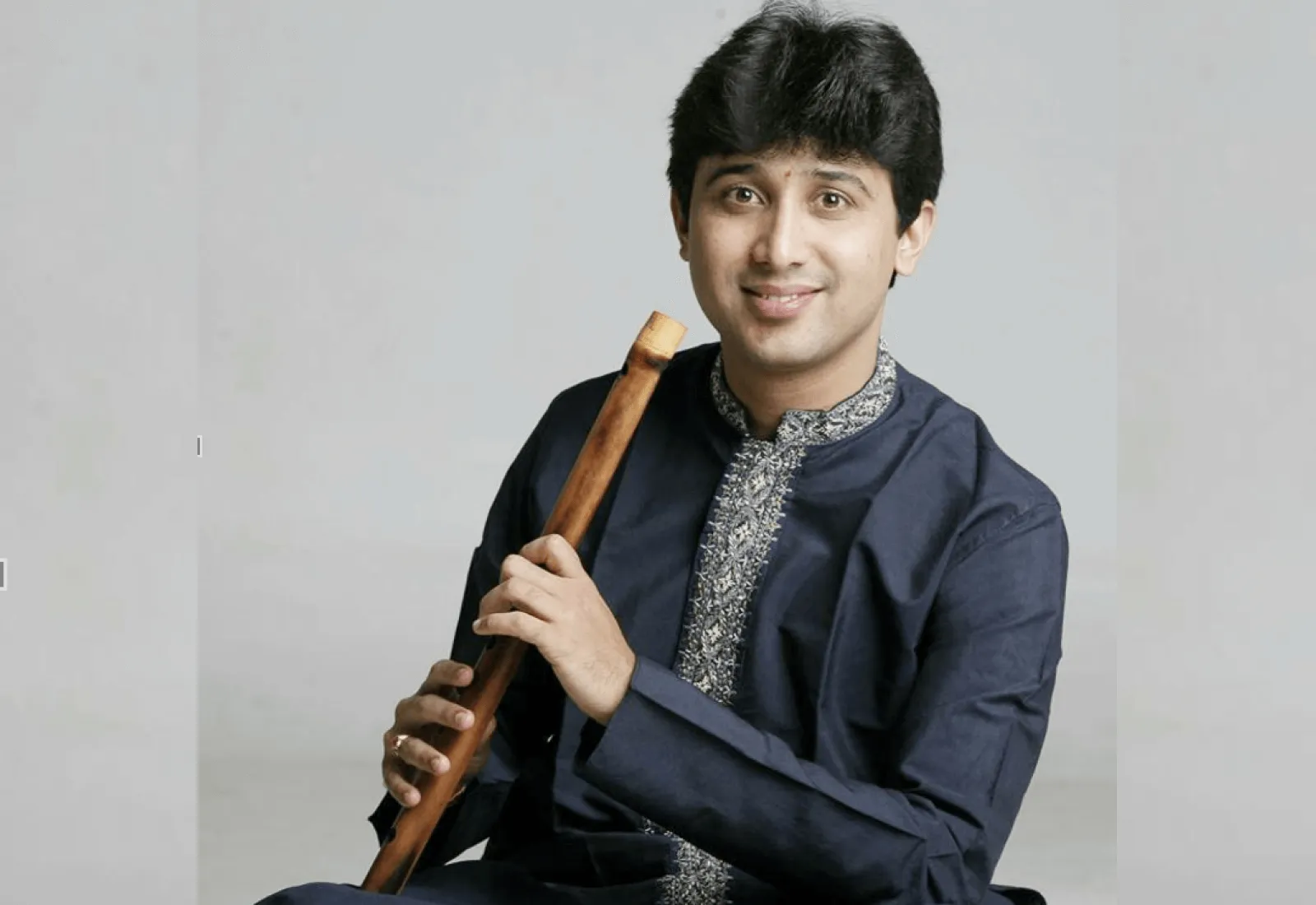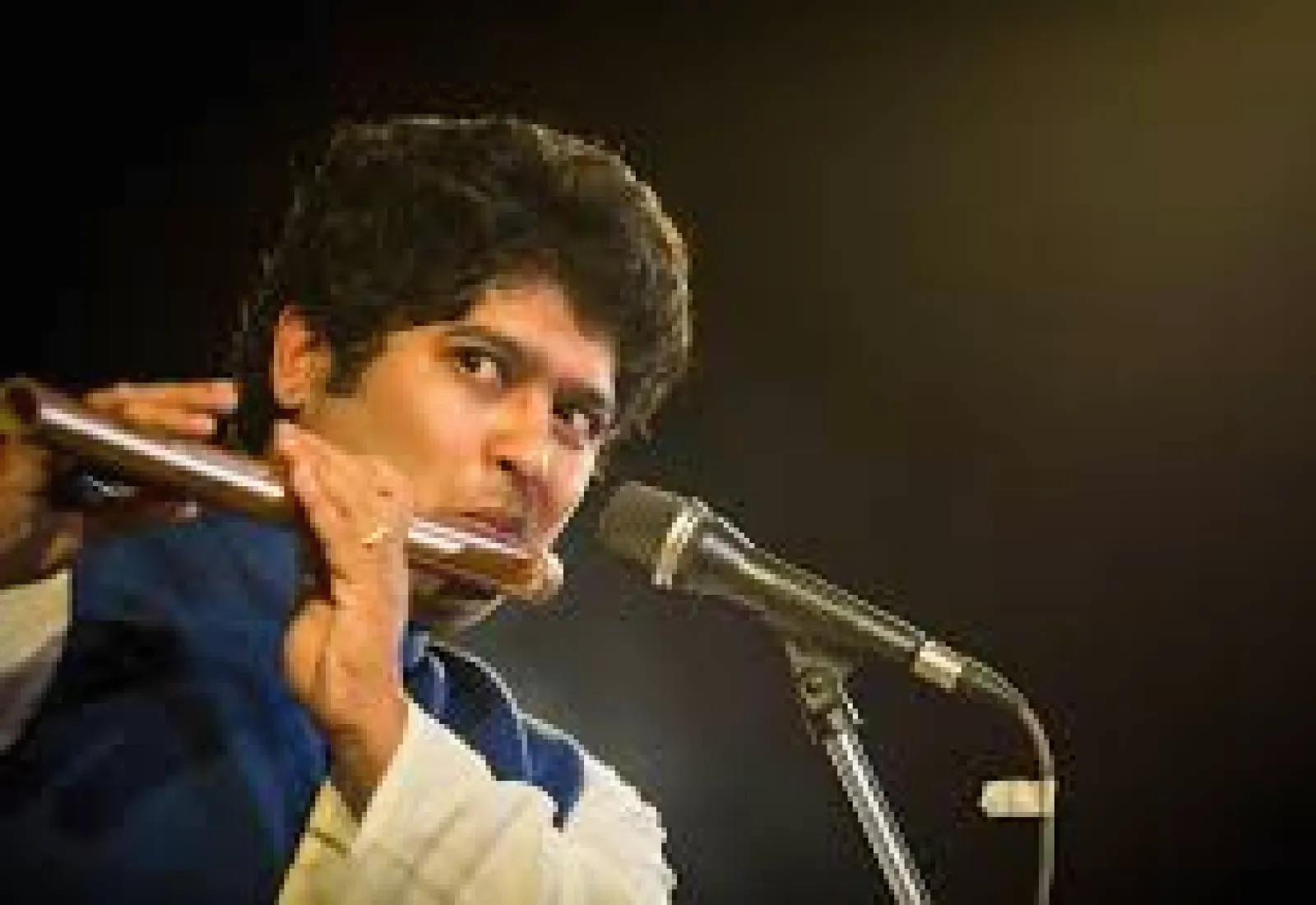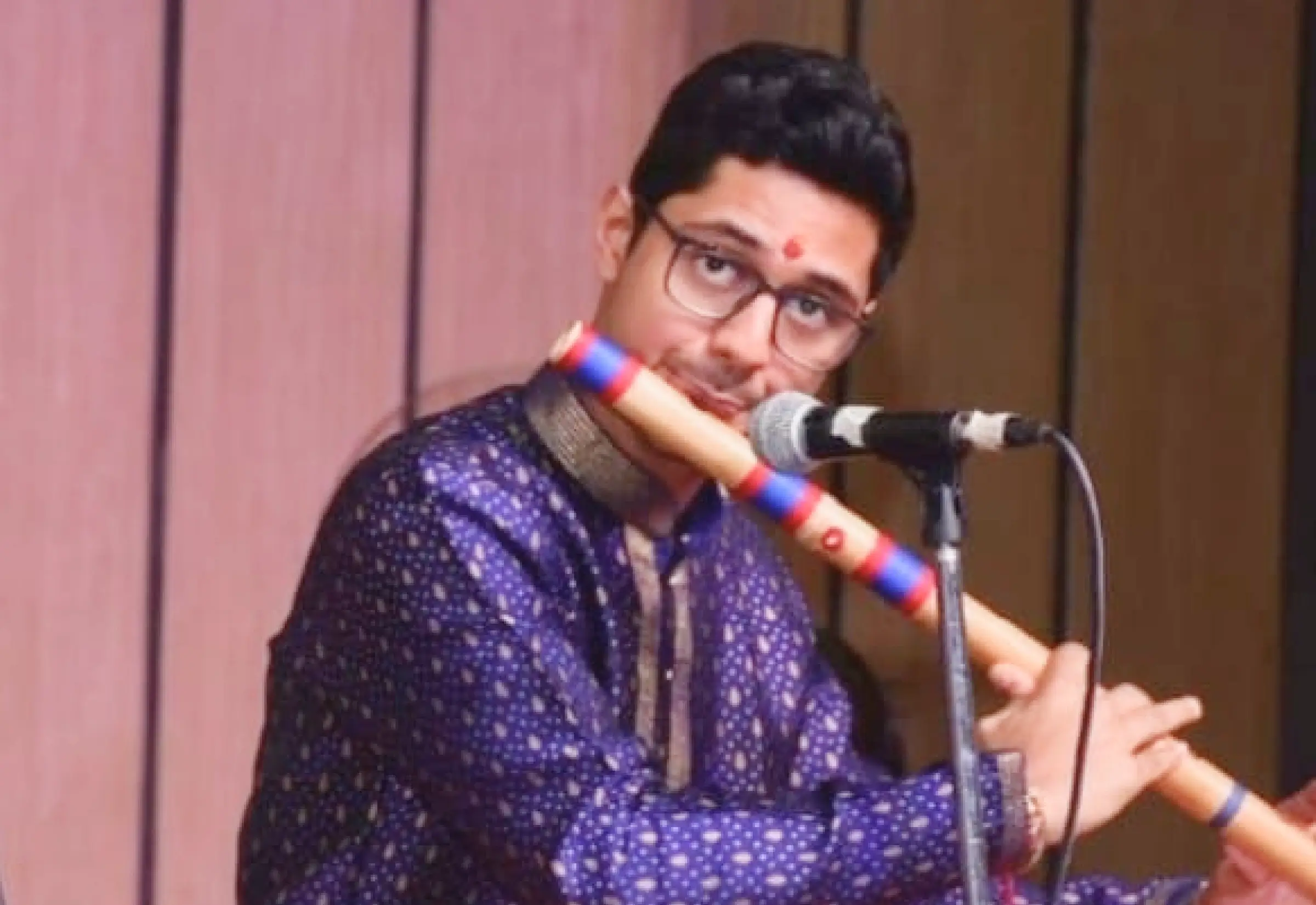Featured
How to Learn Bamboo Flute for Beginners - One Breath at a Time.
Fancying about learning a musical instrument is one thing, and learning to play it is a completely different thing. It is true for every musical instrument.
You want to build a house. So you have an idea about the structure of the house and what each room should look like. However, all these are in your head. You don’t have the tools or techniques to materialize these ideas.
Now imagine - you have the best of the tools, but you don’t have the creative skills. Even then, it won’t work. The key is to have a proper balance of techniques and creativity.
“Playing music is somewhat like that. It comes from the perfect blend of mastering the right techniques and creativity,” explains renowned Flutist and teacher - Suchismita Acharya. However, even getting to this point requires a lot of tenacity and patience on the part of the teacher and the student.
Suchismita Acharya has been bestowed with the blessings of her Guru Pandit Hariprasad Chaurasia. And she has been sharing her knowledge with thousands of students worldwide for the past 15 years. Her able guidance has helped all her students to develop their flute-playing skills.
Suchismita’s association with ipassio has also been mutually rewarding for both. Today, she shares with Utpala some of the most practical ways to overcome teething problems for beginners and remain motivated.
A mindfully formulated curriculum by the teacher and the teaching methodology plays a significant role. After 15 years of teaching experience, Suchismita knows exactly what concept to introduce, when, and how to go about it.
How to Get a Sound out of the Flute
It starts with finding that one breath and the right positioning of the flute under your lips that can create a sound when you blow into the bamboo flute.
Suchismita explains each and every early learning steps in explicit details. She talks about the pulls down factors as well. And she explains how to keep the motivation alive and kicking.
Right Positioning of the Flute
She says, “Even before the fingering, you should just position your flute and blow. First, you have to see in which position a little sound is coming. Most of it will just be air. It is just like when you try to whistle for the first time or try to play the conch shell. So you keep changing the position and blow until you get a sound. So that is the starting point for us.”
Fingering Tips
“After this, I ask the students to place their fingers and take out a note. That too, Sa is not the first note we learn. We start with ‘Ga’,” she continues, “then we learn ‘Re’ and then we go to ‘Sa’.”
Suchismita explained - the reason for this is that ‘Ga’ requires one note to be closed, ‘Re’ requires two notes to be closed, and ‘Sa’ requires three holes to be closed. For a beginner, closing three holes at the same time will not be easy. If your fingers are not positioned properly, some leakages will be there and you will not get the sound.
You have to see the fingers. You have to understand the differences. You have to observe the technical things, hear them, and understand how it works.
Keep Trying Till You Get a Sound
It required a lot of patience and tenacity, especially for the first three weeks. I tell my students to just follow my instructions. Do not apply your own brain or draw a conclusion. Do not judge yourself at this point. Just stay put for the first three weeks. It is very much normal to not get the sound at this stage.
She advises the students to keep their flute in an accessible place that is within their reach. Whenever they have five-ten minutes in their hands, they can just pick up the flute and try. Just keep trying and the sound will come.
Practice Session for Beginners
Playing a bamboo flute requires a lot of tenacity that is built slowly and gradually over a period of time.
Small Intervals for Self-practice
In the initial phase, if a student sits blowing into the bamboo flute for a long time, it might even make him/ her feel dizzy. It happens because you are using your breath while playing the flute. Suchismita advises her students to schedule small practice sessions for 10-15 minutes. You can come back to your flute for such small intervals two to three times throughout the day.
She says, “That is way more effective than trying to sit there for an hour forcefully with your arms, shoulders, and back aching. At this stage, the body is not prepared for sitting for such a long time. Neither is your mind prepared to concentrate at a stretch. That’s the reason, smaller intervals help to build the stamina slowly.”
Focused Practice Session - One Concept at a Time
“I advise my students to sit with one target. Take up just two exercises and keep repeating. The refinement will come only through polishing,” she asserts.
Curriculum and Teaching Methodology
Full Notes and Half Notes
In the bamboo flute, we use full notes and half notes. While playing the flute we bring out the notes by covering the finger holes. For some notes, we cover the finger hole completely. These are the full notes. And for half notes, we cover the holes half.
Mostly suddha swaras are played in full notes and the komal swaras (Ra, Ga, Dha, Ni) are played in half notes. The only exception is in the case of Madhyama (Ma) where the half note is used to play the suddha swara and the full note is used to pay the teebra swara.
Simple Compositions Using Suddha Swaras
So for absolute beginners when they are able to hold the flute and bring out the notes, I teach them very simple compositions from Ragas like Bhopali and Durga. These are the Ragas that use only suddha swaras and do not need them to use the half notes. So once they are used to it, slowly, I introduce Ragas with a single half note at a time.
It is amazing how just the introduction of a single half note in the same pattern of notes can completely change the sound structure. Gradually, I introduce the 2nd half note and then the third, and the fourth.
Keeping the Sessions Engaging
I don’t stress too much about the exercises. I prefer the students to learn the exercises along with the Ragas so that they don’t feel bored. They can learn the exercises through simple compositions. The other significant part is to learn the Talas.
Learning the Key Techniques
How is such wonderful music created through just a bamboo pipe with a few holes in it?
There are three techniques - one is Gamak, Sapat and the other is tonguing, or Tutkari as we call it. All these exercises are taught to master these three techniques. The expressions are mainly brought out through these techniques. Then it comes to playing a Raga composition or even a Bollywood song.
Suchismita explains -
Gamak is when we have one strong note - the main note, but it has a touch of another note. Gamak is more repetitive.
Tutkari is when we use the tongue to create a rippling impact like ‘tukutukutukutuku’.
Sapath - When we don’t use the tongue and play the note simply with the breath and fingers. This helps us to run faster because there is no hindrance created by the tongue. So the faster your fingers move, the faster you can play.
Buying Tip for Beginners
For a beginner - if it is a small child, I would recommend an A-Flute Medium. And for students who are 15 or 16 years of age and above, I recommend the G-Flute Medium. As they proceed to advance levels, they can graduate to F and E Flutes.
Challenges of Learning Flute Online
We have discussed at length the learning challenges in the early days. Moving ahead, when we start practicing with the tabla, there is a sound lag that happens. The ‘dha dhin dhin dha’ that I am playing here reaches the student as a gap of two to three seconds. So we cannot play on the same tempo together. This is absolutely effortless in physical classes.
Also, I can physically position the flute for them to the right position and ask them to blow. In online classes, I can just explain.
Having said that, these are just challenges. It’s not that we can’t deal with them. The most important thing is that you are getting an opportunity to learn.
Drop-Out Rates and Why
According to Suchismita, the drop-out rate is 50%.
One common reason, she says, is that the students lose patience. Some even get frustrated for not being able to play a Bollywood song.
Other reasons for dropping out could be discontinuation due to a family emergency. Due to long gaps between classes, students lose their motivation.
Suchismita advises her students to at least come to the class even if they are not able to practice at home. It helps them to hang in there.
She regrets, “Unfortunately, the students who are good at it, are the ones who leave very easily. People don’t have the patience to go through the process. This is a fast food generation who wants everything instant.”
What is the right age to start learning the flute?
Ideally, the right age to start is 7 years and above - opines Suchismita. There is no upper age limit. Even 65 year old can play the flute.
Learners who start late usually have different learning objectives. They might not want to make a career out of it. Mostly, they take up a flute class to remain engaged creatively. “However, one challenge with older people is that they are a little rigid at times. They don’t listen to you. Some of them. Sometimes,” states Suchismita.
Advice for aspiring students who want to learn to play the flute
“They should have patience. It is a difficult art form. Don’t come to your flute with a lot of frustration that it’s not happening. Come to it in a happy mood. It is a part of it. Challenges will come. You have to cross those hurdles and be prepared to hard work,” concludes Suchismita.
Concluding - Beginner's Tips for Learning Flute
We come to the end of the long and detailed interview with Suchismita Acharya. We have carried out this interview in three parts.
You can also read Bamboo Flute - the Oldest Musical Instrument and Best Practices at Offline and Online Bamboo Flute Classes. We have tried to bring to the readers every minute detail about learning the bamboo flute online. A detailed account of the lesson plan, the beginner’s challenges, and ways to overcome them have been discussed explicitly - like never before.
I hope you find this conversation informative and inspiring.
If you want to get a feel of how everything that we have discussed in this interview role out in reality book a free meeting with Suchismita Acharya on ipassio.com.
We promise to bring more of such thoroughly informative bolgs for music aspirants in the future. Keep reading ipassio blogs.


